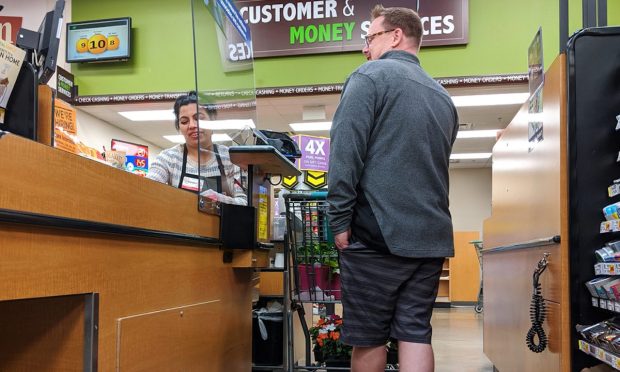Kroger Leverages Personalization to Win Share of Food Spend From Restaurants Amid Rising Prices

The rise in food costs, while bad news for consumers, has its advantages for grocers. With price concerns causing many to be more deliberate about how they spend their money, grocers can leverage their low prices relative to restaurants to hold onto their increased share of consumers’ total food spending.
“With most people consuming meals at home, and grocery stores continuing to capture the majority share of stomach, it’s more important than ever that we provide customers with flexibility on how they choose to shop with us,” Rodney McMullen, chairman and CEO of Kroger, the United States’ largest pure-play grocer, told analysts on a call Thursday (Dec. 2) discussing the retailer’s Q3 2021 results. “We have the right seamless ecosystem in place to meet our customers’ evolving needs.”
Omnichannel options are key for grocers, given that while most consumers still prefer in-person shopping, a major contingent also seeks out digital options. Research from PYMNTS’ study “What Consumers Expect From Their Grocery Shopping Experiences,” created in collaboration with ACI Worldwide — which featured a census-balanced survey of more than 2,300 U.S. adults — 34% of consumers now buy groceries online, and 18% of consumers prefer these eCommerce options to in-store shopping.
You may also like: Digital Features Can Help Grocers Win Over 43% of Shoppers
As for grocers’ direct digital ordering channels, the study found that 23% of consumers are buying online and have the products delivered to their houses, and 20% are ordering curbside pickup online. As such, Kroger is looking to bolster its digital ordering platforms with data-informed personalization, leveraging these capabilities to secure consumers’ food spending at a time when soaring inflation is leaving many shoppers focused on cost.
“We are leveraging our data and personalization to enable our customers to stretch their food dollars,” said McMullen. “We deliver value when customers need it the most with personalized promotions.”
Findings from the study show that 54% of grocery shoppers are loyalty program members, and 63% of these members say that loyalty programs impact their decisions about which grocery stores to use. Moreover, 61% of these members spend more at grocery stores that have loyalty programs.
Amid rising food costs, Kroger research shows that consumers are eating more at home, which McMullen attributed to the affordability of food at home relative to restaurant meals, as well as to convenience and health concerns. He added that the trends the grocer has seen both overall and around the holiday season suggest that the shift toward food at home “is structural and not temporary.”
Additionally, in the face of staffing challenges, Kroger is looking to implement automated technologies to reduce the work needed from human employees.
“We keep identifying new innovative ways to ensure that we’re designing for value and maximizing opportunities to be more efficient,” the grocer’s CFO Gary Millerchip told analysts. “It would include using technology and automation to reduce shrink and waste in the business, and to improve on some of those activities in the store and our operations that are very manual and don’t really maximize the value that our great associates can deliver for customers … it includes automating our ordering and production planning type processes.”
As of October, the most recent month on record, United States Bureau of Labor Statistics (BLS) preliminary data show that employment in the food and beverage stores subsector of retail is down about 27,000 jobs year over year. Additionally, as of September, retail sector-wide quit rates were up by 42% year over year.
